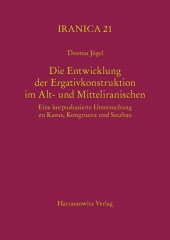
Exhibition: The Eye of the Shah: Qajar Court Photography and the Persian Past
October 22, 2015- January 17, 2016
Gallery Hours: Wednesday-Sunday 11am-6pm, Friday 11am-8pm, Closed Monday and Tuesday
The Eye of the Shah: Qajar Court Photography and the Persian Past explores a pivotal time in Iran, when the country was opening itself to the Western world. With over 150 photographic prints, a number of vintage photographic albums, and memorabilia that utilized formal portraiture of the shah, the exhibition shows how photographers—many of them engaged by Naser al-Din Shah Qajar (r. 1848-1896), the longest reigning Shah of the Qajar Dynasty (1785-1925)—sought to create a portrait of the country for both foreigners and Iranians themselves. Most of the photographs in the exhibition have never been publicly displayed.
The Eye of the Shah includes unprecedented photographs of life in the royal court in Tehran, such as images of the last shahs of the Qajar Dynasty, their wives and children, and court entertainers. These are complemented by photographs of iconic ancient monuments and sites, such as Persepolis and Naqsh-e Rostam, capturing Iran’s expansive and rich historical past, which further promoted Iran and Iranian culture to the West. The photographers depicted the Iran of their day through images of modernization initiatives, such as the military, the railway, and the postal system, while the daily lives of Iranian people was revealed through photographs showing shopkeepers, street vendors, and field workers. Additionally, Eye of the Shah features pieces by two modern-day Iranian photographers, Bahman Jalali (1944-2010) and Shadi Ghadirian (b. 1974), who evoke and sometimes incorporate images of photography from the Qajar Dynasty, illustrating the continuing and powerful influence that Iranian photography of 19th and early 20th century photography has in the country’s contemporary art world.
The image is taken from ©Wikimedia Commons.

 Sharafi, Mitra. 2014.
Sharafi, Mitra. 2014.  Lubotsky, A. (2015).
Lubotsky, A. (2015).  Jügel, Thomas. 2015.
Jügel, Thomas. 2015.  Kolesnikov, Aly Ivanovich. 2015.
Kolesnikov, Aly Ivanovich. 2015.  Bergerhausen, Johannes. 2014.
Bergerhausen, Johannes. 2014. 
